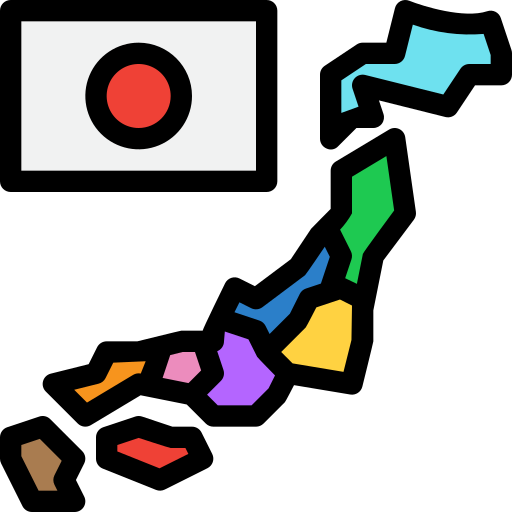Have you ever been captivated by Japanese culture, anime, or cuisine, only to feel intimidated by the prospect of learning such a complex language on your own? You’re not alone. Many aspiring Japanese speakers wonder if it’s even possible to learn Japanese without a teacher. The good news? Not only is it possible, but thousands of successful self-learners prove it every year.
As someone who mastered Japanese through self-study, I can assure you that while the teacher-less path has its challenges, it also offers incredible freedom and satisfaction. This guide will show you exactly how to learn Japanese with no teacher, breaking down the process into manageable strategies that address every aspect of language acquisition.
Want to start learning Japanese right away?
Access our Free Study Guides with grammar explanations, vocabulary lists, and study tips. All at no cost.
Why Traditional Japanese Learning Often Falls Short
Traditional classroom settings certainly have benefits, but they also come with significant limitations:
- Rigid pace that’s either too slow or too fast
- Limited speaking practice in group settings
- Standardized curriculum that might not match your goals
- Expensive tuition fees
- Fixed schedules that might conflict with your life
When you learn Japanese teacherless, you bypass these constraints. You can customize your learning journey, focus on what matters most to you, and progress at your optimal pace.
The Self-Study Advantage: Creating Your Own Japanese Curriculum
The key to successful self-study is developing a well-rounded approach that covers all language skills. Here’s how to create a balanced practice routine that will keep you progressing steadily.
1. Master Kanji Through Systematic Practice
Kanji often intimidates beginners, but with the right approach, you can learn these characters efficiently without a teacher.
Recommended Strategy:
- Start with the most frequently used kanji (focus on the Jōyō kanji list)
- Use spaced repetition systems (SRS) like Anki or WaniKani
- Practice writing each character by hand to reinforce memory
- Create memory hooks or stories for complex characters
WaniKani deserves special mention for its structured approach to kanji learning. It uses clever mnemonics and a proven progression system that has helped thousands of self-learners master kanji.
Real-Life Example: When learning the kanji 食 (shoku – to eat), you might connect it to its components: a box (person) with a lid, representing a person at a table eating. Creating these mental images dramatically improves retention.

2. Build Grammar Foundations Without Classroom Instruction
Grammar is often where people struggle most when trying to learn Japanese without a teacher. The solution? Combine structured resources with abundant examples.
Recommended Strategy:
- Use a core textbook like Genki or Tae Kim’s Guide as your foundation
- Supplement with online explanations when concepts aren’t clear
- Practice each grammar point by creating your own example sentences
- Find example sentences in authentic materials to see grammar in context
When I encountered the challenging concept of passive form, I found standard textbook explanations confusing. Online resources like JGram provided clearer explanations with practical examples that finally made it click.
Example Grammar Pattern: The ~てあげる (~te ageru) structure for “doing something for someone”:
友達に日本語を教えてあげました。 Tomodachi ni nihongo o oshiete agemashita. I taught Japanese to my friend (as a favor).
3. Develop Reading Skills Through Level-Appropriate Materials
Reading is perhaps the easiest skill to practice when you learn Japanese teacherless, but finding materials at the right level is crucial.
Recommended Strategy:
- Begin with graded readers specifically designed for Japanese learners
- Progress to children’s books and manga with furigana
- Use digital tools like Yomichan to quickly look up unknown words
- Graduate to news sites like NHK Easy News for intermediate practice
As I explain in my Beautiful Japanese Words article, reading exposes you to vocabulary in context, making words more memorable than isolated flashcard study.
Reading Progress Path:
- Graded readers (Levels 0-1)
- Children’s stories with furigana
- NHK Easy News
- Manga and light novels
- Standard news and adult fiction
4. Improve Writing Without Feedback from an Instructor
Writing is challenging without a teacher to correct your work, but there are effective workarounds.
Recommended Strategy:
- Practice basic writing with workbooks that include answer keys
- Use language exchange platforms like HelloTalk to get native feedback
- Keep a daily journal in simple Japanese, gradually increasing complexity
- Study model texts and mimic their style and structure
When writing in Japanese, focus on clear communication rather than complexity. As our Japanese Particles Explained post demonstrates, correct particle usage is far more important than fancy vocabulary.
5. Develop Speaking Skills in a Teacher-less Environment
Speaking practice is often considered the biggest challenge when you learn Japanese with no teacher, but technology has made this much easier.
Recommended Strategy:
- Record yourself speaking Japanese and compare to native audio
- Use language exchange apps to find conversation partners
- Practice shadowing (repeating after native audio)
- Talk to yourself in Japanese during daily activities
Speaking practice doesn’t always require another person. Try describing your daily activities out loud in Japanese:
今朝、7時に起きました。コーヒーを飲んで、朝ごはんを食べました。 Kesa, shichi-ji ni okimashita. Kōhī o nonde, asa gohan o tabemashita. I woke up at 7 this morning. I drank coffee and ate breakfast.
6. Enhance Listening Comprehension Without Classroom Audio
Listening skills develop through consistent exposure to natural Japanese.
Recommended Strategy:
- Start with slow, clear audio designed for learners
- Use Japanese subtitles (not English) when watching videos
- Listen to Japanese podcasts during commutes or chores
- Watch Japanese YouTube channels about topics that interest you
I recommend starting with the listening sections from language learning apps, then graduating to natural content like Japanese cooking videos or travel vlogs where visual context helps comprehension.
Love Japan? Stay in the Loop!
Hi, I’m Jesse! Join 100+ learners and get my best Japanese learning tips straight to your inbox.
7. Create Accountability Systems to Replace Teacher Oversight
Without a teacher setting deadlines and checking progress, self-discipline becomes essential.
Recommended Strategy:
- Set specific, measurable weekly goals
- Use habit-tracking apps to maintain consistency
- Join online study groups or forums
- Schedule regular self-assessments to measure progress
My most successful periods of Japanese study came when I committed to specific goals like “learn 10 new kanji per week” rather than vague objectives like “study more Japanese.”
Essential Resources to Learn Japanese Without a Teacher
The right tools make teacher-less learning much more effective. Here are my top recommendations:
Core Resources:
- A structured textbook (Genki, Minna no Nihongo, or Japanese From Zero)
- Spaced repetition system for vocabulary (Anki or Memrise)
- A kanji learning system (WaniKani or Kanji Study app)
- Grammar reference (Tae Kim’s Guide or Dictionary of Basic Japanese Grammar)
- Language exchange app (HelloTalk or Tandem)
For comprehensive guidance on building your Japanese resource library, check out our free guides on the resources page.
Overcoming Common Challenges When Learning Japanese With No Teacher
Self-study comes with unique challenges. Here’s how to overcome the most common ones:
Motivation Dips: Schedule regular “wins” by setting achievable mini-goals that give you a sense of progress.
Uncertainty About Pronunciation: Use resources with audio components and record yourself to compare.
Lack of Speaking Opportunities: Consider online tutoring platforms like iTalki for occasional sessions, even if you primarily learn Japanese teacherless.
Grammar Confusion: When stuck on a concept, look for multiple explanations across different resources.

Q&A: Common Questions About Learning Japanese Without a Teacher
Is it really possible to become fluent in Japanese without a teacher?
Yes, it’s absolutely possible to become fluent in Japanese without a teacher through consistent self-study and language practice opportunities.
How long does it take to learn Japanese on your own?
With consistent daily practice, most self-learners achieve basic conversational ability in 1-2 years and advanced fluency in 3-5 years.
What’s the biggest challenge when learning Japanese without formal instruction?
The biggest challenge is maintaining consistent motivation without external accountability, followed by getting accurate feedback on speaking and writing.
Should I learn hiragana and katakana before kanji?
Yes, mastering hiragana and katakana should be your first step, as they form the foundation of the Japanese writing system and can be learned in just a few weeks.
How can I know if I’m pronouncing Japanese correctly without a teacher?
Record yourself speaking and compare with native audio, or use language exchange apps to get feedback from native speakers.
Final Thoughts: Your Teacher-less Japanese Journey Begins Now
Learning Japanese without a teacher isn’t just possible—it can be incredibly rewarding. The self-study approach develops not only language skills but also self-discipline and research abilities that benefit you far beyond language learning.
As someone who has walked this path, I can assure you that the key to success lies in creating a balanced study routine that addresses all language skills, finding the right resources for your learning style, and connecting with the Japanese language through materials you genuinely enjoy.
If you’re serious about your Japanese journey, don’t miss our How to Think Japanese guide, which explains the crucial difference between 思う (omou) and 考える (kangaeru)—knowledge that will instantly elevate your Japanese to a more natural level.
Ready to begin your teacher-less Japanese adventure? Remember that consistency trumps intensity. Fifteen minutes of daily practice will take you further than occasional three-hour cram sessions. Your journey to Japanese fluency starts today—no teacher required.
Have you tried learning Japanese on your own? Share your experiences or questions in the comments below!
Connect with Fellow Japanese Learners!
Ask questions, get study tips, and take part in weekly challenges. Join a community of motivated learners exploring both the language and culture of Japan!




